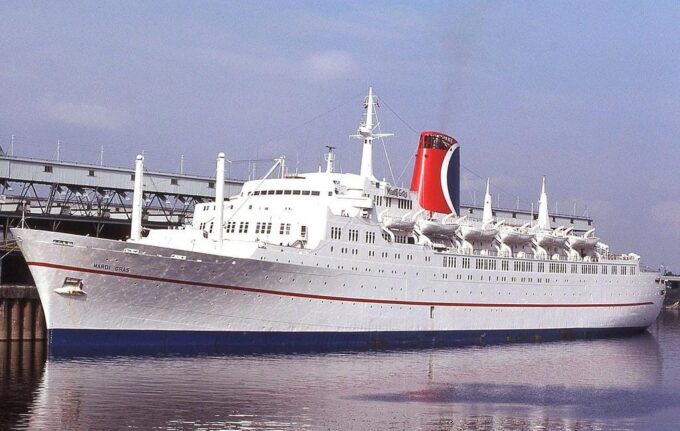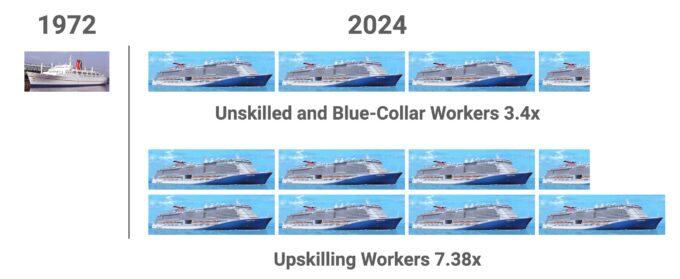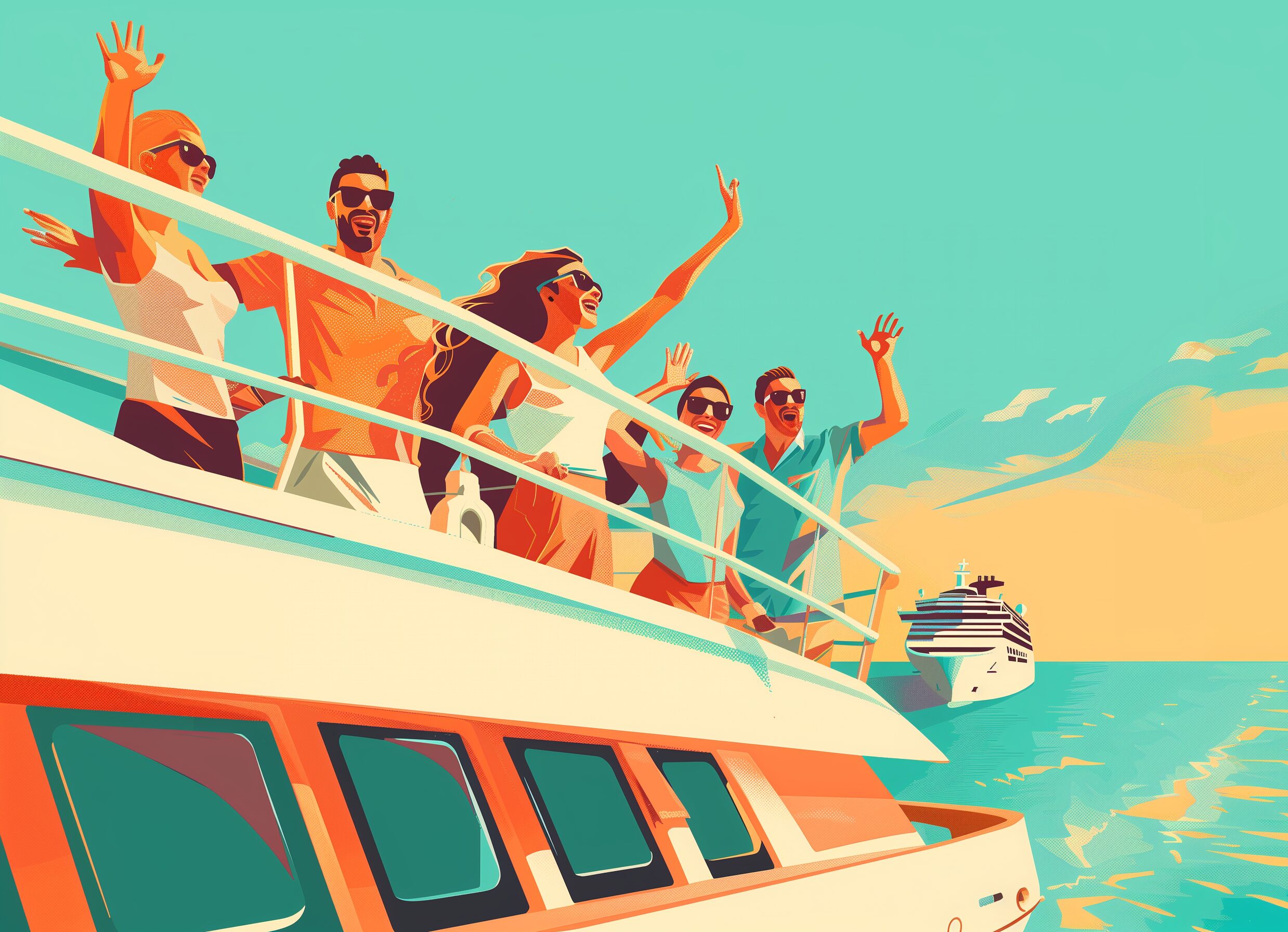Summary: In the last 50 years, the time price of a Caribbean cruise vacation has dropped significantly, making it accessible to blue-collar and unskilled workers. Ted Arison’s Carnival cruise line, starting in 1972, transformed cruising from an exclusive luxury to an affordable vacation for many. Today’s cruises offer vastly improved experiences and illustrate how entrepreneurial vision can make luxuries accessible to all.
Entrepreneur Ted Arison launched his first ship, the Mardi Gras, on March 11, 1972. At the time, cruising was considered an expensive luxury for older rich people. Over the past five decades, Arison’s Carnival cruise line made this high-end experience affordable for everybody, including plumbers, schoolteachers, and college students. The Mardi Gras sailed for 20 years and created the market we enjoy today. It even gave life to a popular TV show, The Love Boat, which aired from 1976 to 1990. Carnival cruise line managed to grow from a one-ship line to the largest cruise company in the world. The first Mardi Gras cost $5 million and accommodated 1,248 passengers on 10 decks.

You could book a seven-day cruise from Miami to the Caribbean for $240 to $595. Blue-collar workers at the time were earning around $4.59 an hour in wages and benefits. At $240, a cruise would cost them 52.3 hours. Unskilled workers were earning closer to $2.14 an hour, making their time price around 112.2 hours.

In 2021, Carnival launched its new Mardi Gras. This $950 million ship accommodates 6,500 passengers and approximately 2,000 crew members. It hosts “Bolt” the world’s first shipboard roller coaster, along with a water park and a sports center and is powered with liquified natural gas. The quality of the experience has vastly improved in 50 years with better food choices, entertainment, comfort, and safety. The new Mardi Gras weighs 180,000 tons, around 6.6 times more than the 27,284-ton original. This larger size dramatically reduces sea sickness.

Today you can book a seven-day cruise from Carnival’s new $163 million, 188,000-square-foot terminal at Port Canaveral, Florida, to the Caribbean for $549. Blue-collar workers are now earning around $36.15 an hour in wages and benefits, putting their time price at 15.2 hours. Unskilled workers are earning closer to $16.51 an hour today, making their time price around 33.3 hours.
For these workers, the time price has dropped more than 70 percent. For the time it took them to earn the money to buy 1 cruise in 1972, they get 3.4 today. Cruise abundance has increased 240 percent. If you “upskilled” from an unskilled worker in 1972 to a blue-collar worker by 2022, your cruise abundance increased by a factor of 7.38, or 638 percent. Everybody floats first class now.

The larger the market, the more affordable things become for everyone. Adam Smith wrote about this in 1776. From 1972 to today, US population increased 131 percent from 208 million to around 340 million. Every 1 percent increase in population corresponded to a 1.83 percent to 4.87 percent increase in personal cruise abundance.
It’s visionary entrepreneurs like Ted Arison that take on enormous risks and create whole new markets and then get fabulously rich by making luxuries affordable for everyone.
This article was published at Gale Winds on June 28, 2024.

